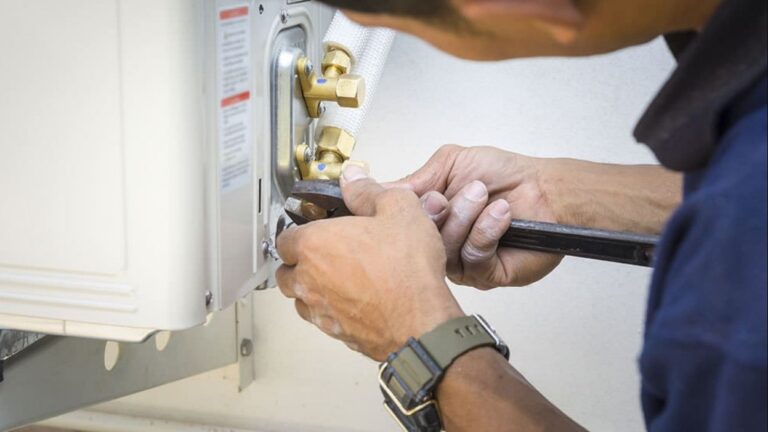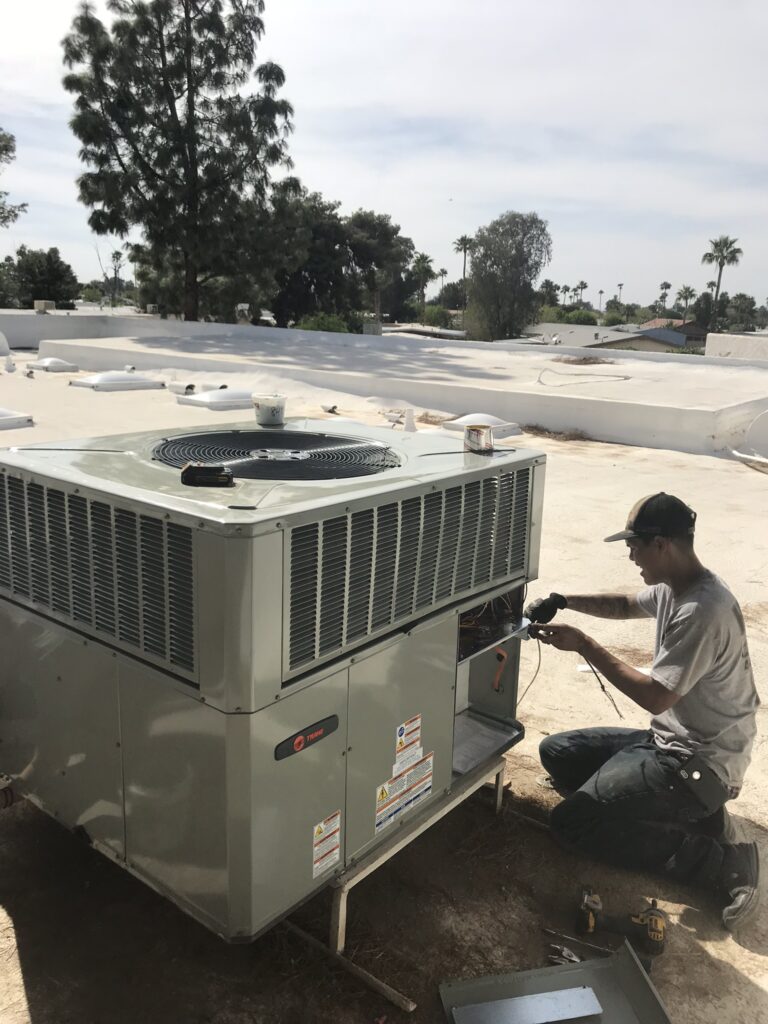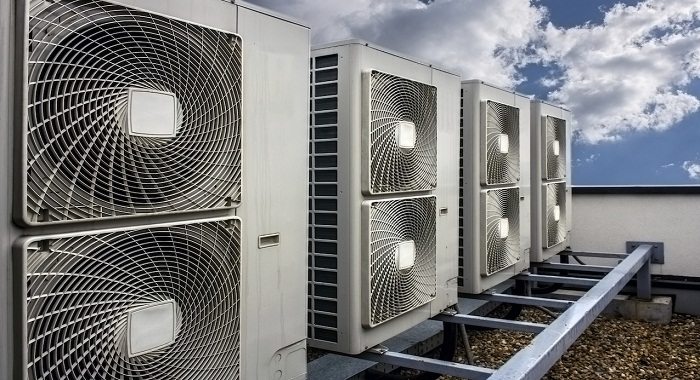7 Warning Signs You Need a New HVAC System
Most modern HVAC systems are built to last and work well. But, they do have a limited life span. Air conditioners or heat pumps usually last 10 to 12 years. Furnaces can go up to 15 to 20 years.
Knowing when your system is getting old is key. It helps keep your home comfortable and safe.
As your heating and cooling system gets older, it might not work as well. Spotting these signs early can prevent big problems and expensive fixes. Let’s look at the main signs it’s time for a new HVAC system.
Increased Energy Bills
If your energy bills keep going up without a clear reason, it could mean your HVAC system is not working well. Even with normal wear and tear, your HVAC’s efficiency can drop over time. This can lead to higher bills, even if you keep the same indoor temperature.
Several factors can cause this inefficiency. The main one is the system’s age. As your HVAC gets older, it can’t heat or cool your home as well. This makes it work harder and use more energy.
Sudden Spike in Monthly Costs
A sudden jump in your monthly energy costs can be scary. If your bills are way higher than usual, check if your HVAC system is the problem. Look at your usage patterns and compare them to before to see if there’s a big change.
Comparison to Previous Years
Looking at your energy bills from past years can give you clues. If your bills keep going up, it might mean your HVAC is losing efficiency. Looking at old data can help you spot trends and make smart choices about your HVAC.
| Year | Average Monthly Energy Bill | Percentage Increase |
|---|---|---|
| 2020 | $150 | – |
| 2021 | $165 | 10% |
| 2022 | $185 | 12% |
Inefficiency Due to Aging System
As HVAC systems get older, they lose efficiency. Worn-out parts and less effective seals can cause energy leaks. A study found that older systems can lose up to 30% of their efficiency due to wear and tear.
“Replacing an old HVAC system with a new, energy-efficient model can significantly reduce energy consumption and lower utility bills.”
Think about your HVAC’s age and how it’s doing to decide if it’s time for a new one. If your system is getting old or has already passed its prime, it might be cheaper to replace it than keep fixing it.
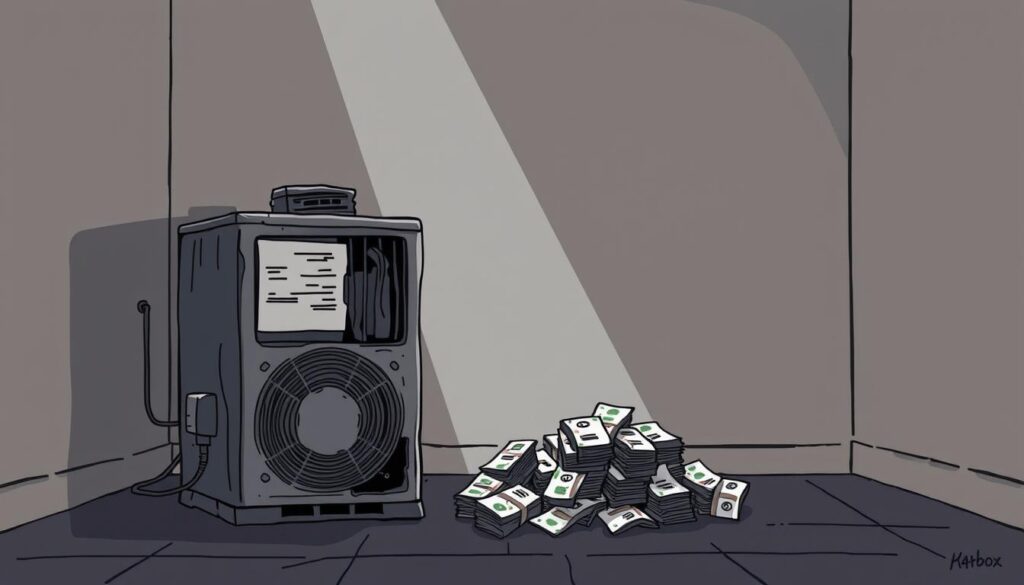
Inconsistent Temperatures
Inconsistent temperatures in your home can be more than a minor annoyance. They can signal that your HVAC system is failing. When some rooms are much warmer or cooler than others, it’s a sign of a problem.
Hot and Cold Spots in Your Home
Hot and cold spots in your home are common signs of temperature issues. Hot spots happen when rooms don’t cool enough. Cold spots occur when rooms don’t heat up enough.
To find these spots, use a thermometer to check room temperatures. This will show if there are big temperature differences that need fixing.
Fluctuating Temperature Readings
Fluctuating temperature readings on your thermostat are another sign. If the temperature keeps changing, it means your HVAC system is struggling. This could be due to problems with your thermostat, duct leaks, or a broken HVAC unit.
Causes of Temperature Imbalance
Knowing why temperatures are uneven is key to fixing the problem. Some common reasons include:
- Improper insulation or duct leaks
- Malfunctioning thermostats or sensors
- An HVAC system that’s too small for your home
- Clogged air filters or vents
To understand these causes better, let’s look at a comparison table:
| Cause | Description | Potential Solution |
|---|---|---|
| Improper Insulation | Lack of enough insulation in walls, attic, or floors. | Add insulation to improve energy efficiency. |
| Duct Leaks | Leaks in the ductwork that cause heated or cooled air to escape. | Seal ducts to prevent air loss. |
| Malfunctioning Thermostat | A faulty thermostat that incorrectly reads or controls temperature. | Replace the thermostat with a new one. |
By understanding and fixing temperature imbalance, you can make your HVAC system more comfortable and efficient. If problems keep happening, it might be time to replace your HVAC system with a newer, better one.
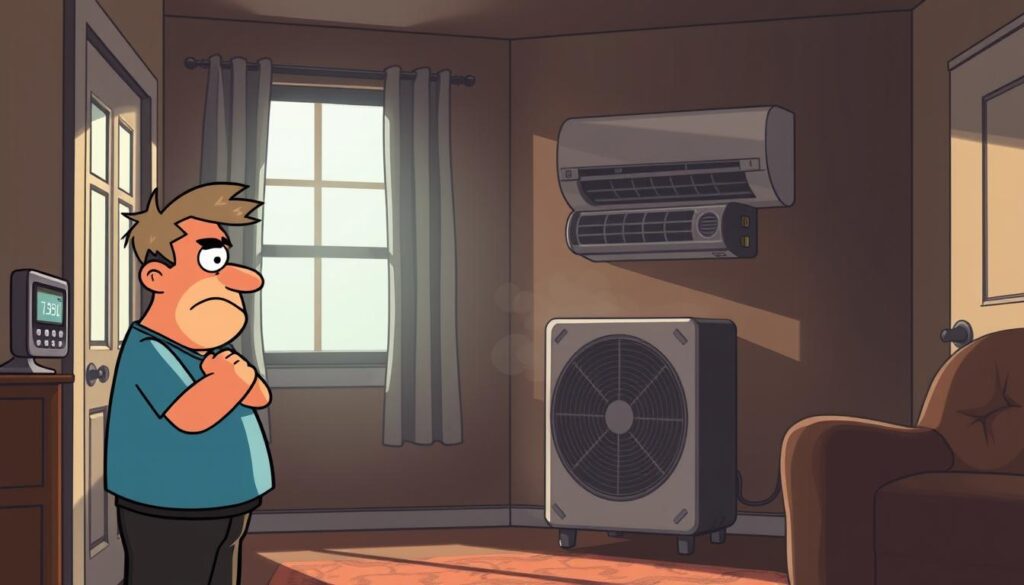
Frequent Repairs
Seeing your HVAC system need repairs more often is a big warning sign. As it gets older, repairs might become more common. But, if repairs start happening a lot more, it might be time to think about getting a new one.
Signs Your System is in Decline
There are a few signs that your HVAC system is not doing well. These include:
- More frequent breakdowns
- Increasing AC repair costs
- Parts becoming obsolete or harder to find
When you see these signs, it’s important to check how your system is doing overall.
Cost-Benefit Analysis of Ongoing Repairs
It’s key to weigh the costs of fixing your HVAC system against replacing it. Think about these points:
| Factor | Repair | Replacement |
|---|---|---|
| Initial Cost | $100-$500 | $3,000-$10,000 |
| Energy Efficiency | Potentially lower | Higher |
| Long-term Savings | Minimal | Significant |
Getting a new HVAC system can save you a lot of money in the long run because it’s more energy-efficient.
When Repairs Outweigh Replacement Costs
Figuring out when repair costs are too high involves looking at the total repair costs over time. If these costs are more than 50% of what the system originally cost, it’s usually cheaper to get a new one.
By knowing the signs of decline and doing a cost analysis, you can decide wisely whether to fix or replace your HVAC system.
Unusual Noises
A working HVAC system is usually quiet. So, if you hear strange noises, it’s a warning sign. Sounds like squealing, screeching, banging, whirring, or grinding are not normal. They show your system might have problems.
Common Sounds Indicating Problems
Unusual noises can mean different issues with your HVAC system. For example, squealing or screeching noises might point to belt or motor problems. Banging or clanking sounds could mean loose parts in the system.
When to Call a Technician
If you hear odd noises, it’s best to call a technician. They can find the problem and suggest fixes. Not fixing these signs can cause bigger issues. This might even mean you need a new system.
Types of Noises to Listen For
- Squealing or Screeching: Often related to belt or motor issues.
- Banging or Clanking: Could indicate loose parts or debris within the system.
- Whirring or Grinding: May suggest problems with the motor or other moving parts.
Knowing these sounds can help you spot problems early. This way, you can fix them quickly. It might even save you from having to get a new, expensive HVAC system.
Poor Air Quality
A failing HVAC system can lead to poor air quality, which is bad for your health. When your home’s air quality drops, it often means your HVAC system isn’t working right. It might not be cleaning or circulating the air well.
Increased Dust and Allergens
More dust and allergens can mean your air quality is poor. If you’re dusting more or have allergy issues, your HVAC might not be filtering the air well. High-efficiency filters can help, but if problems keep happening, your system might be failing.
Unpleasant Odors in Your Home
Stinky smells that won’t go away can also point to bad air quality. If mold or mildew in your HVAC is causing these smells, they can spread everywhere. Regular upkeep can help, but sometimes, you need a new system.
Health Effects of a Failing HVAC System
The health risks of a failing HVAC system are serious. Respiratory issues can get worse because of poor air. If you or your family has more allergies or breathing problems, check your HVAC system.
| Health Issue | Possible Cause | Solution |
|---|---|---|
| Allergies | Dust and allergen circulation | Regular filter changes, consider a new HVAC system |
| Respiratory Problems | Mold and mildew spread through the system | Inspect and clean the system, potentially replace it |
| Unpleasant Odors | Mold, mildew, or dirty ducts | Clean or replace ducts, ensure proper system maintenance |
Age of the System
The age of your HVAC system is key in deciding if it’s time for a new one. As systems get older, they work less efficiently. This can lead to higher energy bills and other problems.
Lifespan of Typical HVAC Units
A central air conditioning unit usually lasts 10-15 years. But, this can change based on how much it’s used, how well it’s maintained, and its quality.
Evaluating Older Systems
If your HVAC system is getting close to or has passed its expected life, check its condition. Look at how often it needs repairs, its energy use, and how well it works. This will help you decide if it’s time for a new one.
Benefits of Replacement
Getting a new HVAC system can improve your energy use, air quality, and comfort. When thinking about replacing your unit, watch for signs like higher energy bills, uneven temperatures, and frequent repairs. Knowing these signs and your system’s age can help you decide when it’s time for a new HVAC unit.


